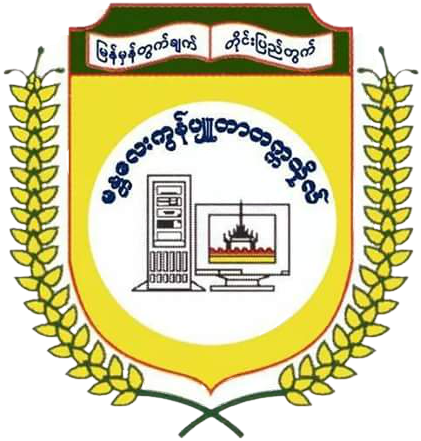FIS PuBlicationS
University of Computer Studies, Mandalay
FIS PUBLICATIONS
Phyu Phyu Khaing | May The` Yu
Abstract
Image annotation is generating the human-understandable natural language sentence for images. Annotating the image with sentence is one kind of the computer vision process that includes in the artificial intelligence. Annotation is working by combining computer vision and natural language processing. In image annotation, there are two types: sentence based annotation and single word annotation. Deep learning can get the more accurate sentence for the image. This paper is the survey for image annotation that applied the deep learning model. This discusses existing methods, technical difficulty, popular datasets, evaluation metrics that mostly used for image annotation.
Date: 30th March, 2019 | International Journal of Computer (IJC), Vol 32 No 1 (2019) | Weblink
Phyu Phyu Khaing | May The` Yu
Abstract
Image captioning is the description generated from images. Generating the caption of an image is one part of computer vision or image processing from artificial intelligence (AI). Image captioning is also the bridge between the vision process and natural language process. In image captioning, there are two parts: sentence based generation and single word generation. Deep Learning has become the main driver of many new applications and is also much more accessible in terms of the learning curve. Image captioning by applying deep learning model can enhance the description accuracy. Attention mechanisms are the upward trend in the model of deep learning for image caption generation. This paper proposes the comparative study for attention-based deep learning model for image captioning. This presents the basic analyzing techniques for performance, advantages, and weakness. This also discusses the datasets for image captioning and the evaluation metrics to test the accuracy.
Date: 8th June, 2019 | International Journal of Image, Graphics and Signal Processing(IJIGSP), IJIGSP Vol. 11,PP.1-8, ISSN: 2074-9074 (Print), ISSN: 2074-9082 (Online) | Weblink
Myat Su Oo | May The` Yu
Abstract
Accurate vehicle detection or classification plays an important role for self-driving cars. Objects classification and detection can be used in various such as Robotics, Medical Diagnosis, Safety, Industrial Inspection and Automation, Human Computer Interface, Advanced Driver Assistance System and Information Retrieval. In this article, we investigated the methods of detection and classification in context images and videos. SIFT, HOG, SVM, CNN, faster RCNN and YOLO methods are reviewed to detect and recognize the objects. The paper aims to know the methods that detect the obstacles on the way to reduce the traffic accidents. We summarize the results, faster-RCNN is better than the other methods for real-time citing the advantages and disadvantages of existing methods.
Date: 1st April, 2019 | International Journal of Computer (IJC) (ISSN 2307-4523) , Jordan, 2019, Vol 32, No 1 (2019) April, Page 73-82 | Weblink
Myat Su Oo | May The` Yu
Abstract
Research in advanced driver help machine (ADAS) is a vital step towards accomplishing the intention of the autonomous smart automobile. ADAS is the machine to help the driver inside the using technique due to the fact maximum road injuries took place due to human blunders. Vehicle detection and distance estimation is a crucial solution for ADAS. This paper aims to reduce traffic accidents on the road using computer vision technologies and to implement the driver assistance system. In this paper, firstly, this system inputs the video and segments the videos as the frames. After segmenting the images, vehicle detection results are represented. In the experiments, own datasets are created by capturing videos in Nay Pyi Taw, Myanmar and detection results are described.
Date: 25th July, 2019 | American Scientific Research Journal for Engineering, Technology, and Sciences (ASRJETS) | Weblink
Phyu Myo Thwe | May The` Yu
Abstract
Hand gesture recognition is used enormously in the recent years for interact human and machine. There are many type of gestures such as arm, hand, face and many other but hand gestures give more meaningful information than other types of gestures. There are many techniques for hand gesture recognition, such as color marker approach, vision-based approach, glove-based approach and depth-based approach. The main purpose of gesture recognition system is to develop a useful system which can recognize human hand gestures and used them to control electronic devices. This paper reviewed the most common used hand gesture recognition methods, tools and analysis the strength and weakness of these methods, and lists the current challenging problems of hand gesture recognition system.
Date: 1st April, 2019 | International Journal of Computer(IJC) ,Jordan, 2019, ISSN 2307-4523 (print &Online), Volume 32, Issue 1, pp. 64-72 | Weblink
Phyu Myo Thwe | May The` Yu
Abstract
The hand gesture recognition system is the hottest topic for the human-machine interaction and computer vision fields. The hand gesture recognition system is still a challenging research area in computer vision for human-computer interaction because of various device conditions, various illumination effects, and very complex background. The recognition of hand gestures used in various application areas: such as sign language recognition, man-machine interaction, human-robot interaction, and intelligent device control and many other application areas. The robust detection of hand in hand gesture recognition system has become a challenging task due to clutter background, dynamic background, and various illumination conditions in real-world conditions. Segmentation is the partioning/separating the foreground hand region from the background region in an image. Segmentation is also pre-processing steps of the hand gesture recognition system. The recognition accuracy will increase if the hand region correctly detected. So, hand region detection is the main important step for the hand gesture recognition system.
Date: 8th September, 2019 | International Journal of Image, Graphics and Signal Processing(IJIGSP), Hong Kong, 2019, Volume 11, No-9, pp. 25-33 | Weblink

